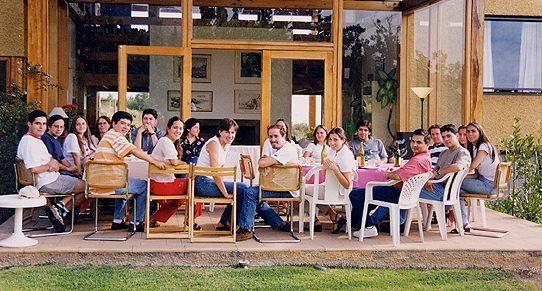
| Centre for Academic Excellence in Biochemical Engineering and Biotechnology.
Faculty of Physical and Mathematical Sciences University of Chile The rapid development of biological sciences in the world has shown that there is tremendous potential for the development of the biotechnology industry worldwide and also in Chile. This made the creation of the Center of Academic Excellence focused towards postgraduate research (Doctorate) in Biochemical Engineering and Biotechnology (CIByB) very timely, in order to attract students from Chile and other countries to implement training in research and generate professionals capable of critical thinking. The establishment of this center (CIByB) facilitates the development of a competitive national biotechnology industry, and help in the formation of Latin-American engineers and scientists, transforming it into an important international pole of attraction that allows the development of bilateral projects with European and other countries.
|
|
Objectives of the Centre The objective of the Centre is to develop postgraduate research in the disciplines of biochemical engineering, biotechnology and systems biology |
|
 |
|
Members of the Centre in a Social Activity. |
|
Areas - Use of Recombinant Strains and Cell Culture This area includes topics such as cloning (recombinant DNA techniques) and the synthesis of recombinant proteins, mathematical modelling and the optimization of the synthesis of enzymes and recombinant proteins using microbial cells and animal cells for cell therapy and vectors for gene therapy. Also the analysis of metabolics fluxes in recombinant cells and the comparison with their gene expression is carried out which includes Metabolomics, gene microarrays and systems biology. - Separation and Characterization of Proteins. Protein Engineering. This area includes the physicochemical and electrophoretic characterization of proteins and the use of protein engineering to study the structure-function relationship of enzymes and find new high activity enzymes by site directed and random mutagenesis (or directed evolution). Also it includes areas such the development of new systems and processes for the separation and efficient purification of proteins (new techniques in liquid-liquid extraction and adsorption processes (chromatography) using membranes for ion-exchange and affinity and mathematical modelling) and the optimisation of these systems. - Process Design using Computational Tools This area includes work on the use of Expert Systems for the optimal selection, synthesis and design of processes. The type of expert system which has been developed is a hybrid system, with wide application in different areas of engineering that allows the use of data bases on the material to be processed and separated (e.g. cell extract with protein product or effluent that needs treatment) with physicochemical and thermodynamic information in addition to heuristic rules and mathematical correlations for design. Also, modern methods of optimization of biotechnology processes in multipurpose and multiproduct plants have been developed. - Mathematical and Bioinformatic Methods. Analysis of Genes, use of Microarrays and Systems Biology Computational and bioinformatic studies are an essential help for the investigation of structure-function relationship and elucidation of the 3-D structure of proteins and for Protein Engineering in a similar way to that which the development of mathematical methods and appropriate statistics are essential to correlate cell function and metabolic fluxes with the expression of genes which are carried out with analysis of microarrays. Mathematical Models of Cell metabolism and of Gene Regulation of Metabolic Flows are presently being built |
|
|
Centre for
Biochemical Engineering and Biotechnology (CIByB) Department of Chemical Engineering and Biotechnology Faculty of Physical and Mathematical Sciences University Of Chile |
|